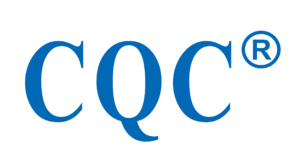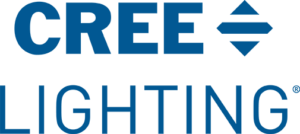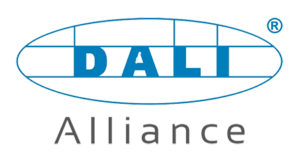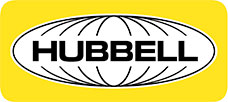
THANK YOU ALL FOR ATTENDING!
2024 Street & Area Lighting Conference
Atlanta, GA, September 22-25, Atlanta Marriott Marquis, 265 Peachtree Center Ave NE, Atlanta, GA. 30303
The IES Street and Area Lighting Conference appeals to a broad spectrum of attendees with a primary focus of improving outdoor lighting. The conference program provides outdoor lighting training classes, seminars, networking sessions and an exhibit hall
Attendees come from across the country and internationally representing utilities, municipalities, DOTs, consulting and engineering firms, research firms, manufacturing firms and educational institutions.
Full Conference registration includes food & drink throughout the event.
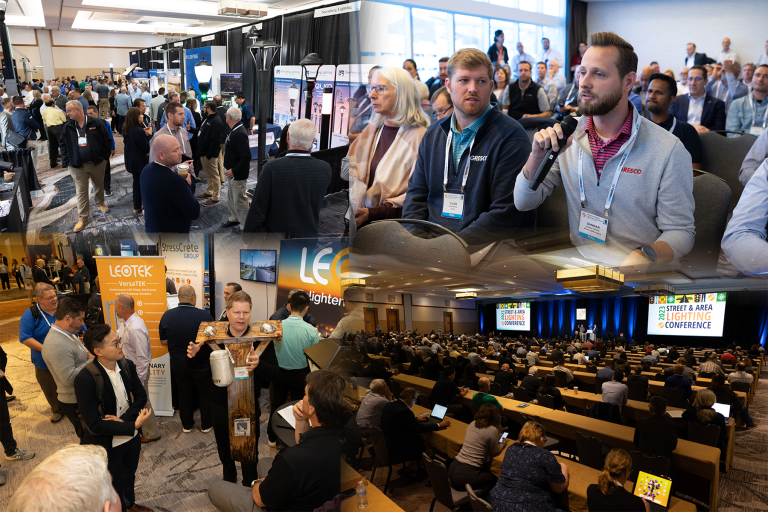
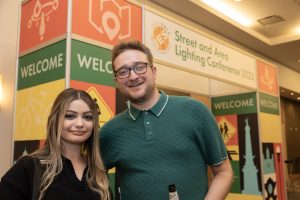
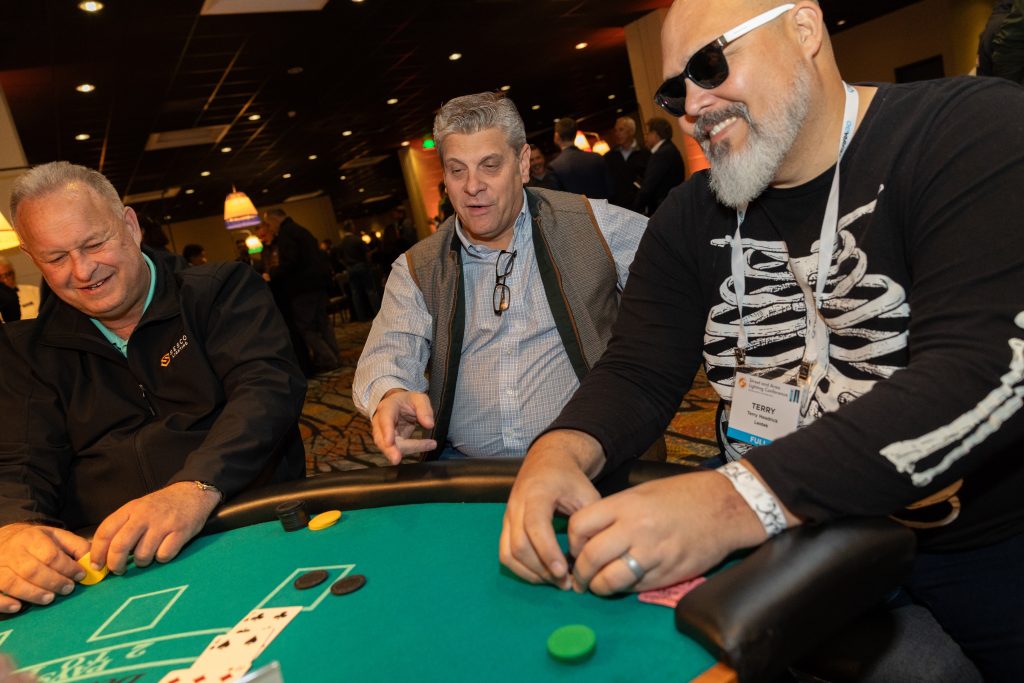
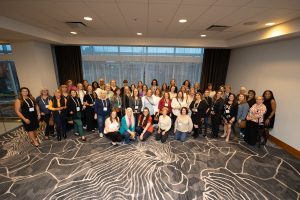
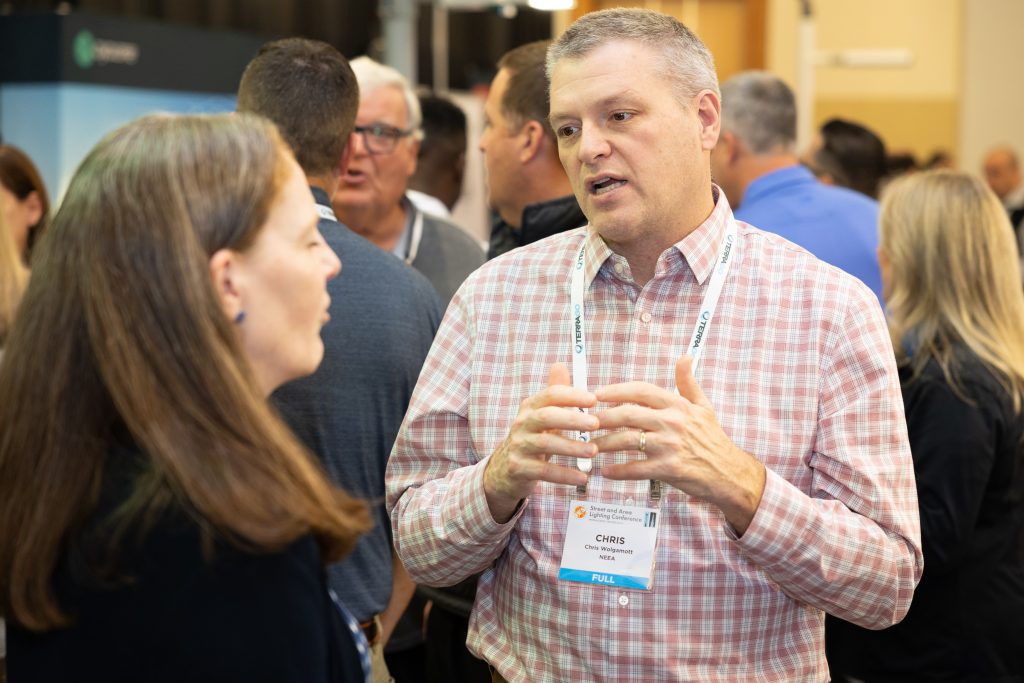
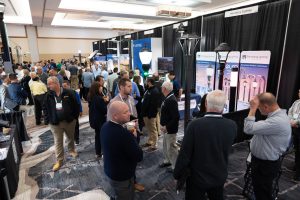
Why You Should Attend SALC
The IES Street & Area Lighting Conference (SALC) is the premier event that brings together decision-makers and their supporting teams from public and private sector utility companies, municipalities, and departments of transport to explore the latest developments, research, and trends in the street and area lighting industry and learn about the implementation of new technologies and solutions that will enable safer, greener, and more resilient lighting systems, at the Atlanta Marriott Marquis, September 22-25, 2024.
SALC allows the lighting community to come together to explore the deployment of lighting technologies that provide better roadway illumination, improve system reliability, promote sustainability, and increase operational efficiency and productivity.
The Conference features a robust program that includes:
- New technology introductions
- Technical presentations, panel discussions
- Summaries of cutting-edge research and case studies of other projects that would be relevant to our system and customers
- The latest industry standards and trends, helping give a new perspective and better-informed skills to implement into current projects.
- Plus the largest and most focused showcase of suppliers to all aspects of this industry!
Don’t wait any longer – register now!
REGISTRATION IS NOW CLOSED
REGISTER CLOSEDAgenda
Sunday Class: Fundamentals of Outdoor Lighting—Eric Haugaard, Duane Henderson
As the outdoor lighting world progresses towards a market where a non-LED sourced luminaire is a rarity it becomes ever more important for all those involved to fully understand the fundamentals of this technology. As the technology has progressed, over the years, from the simple race to the best Lumens per Watt to one of discussions relative on quality of light, reliability of the overall luminaire and the effect all this has on the health and safety of the individuals within the illuminated space it is critical that we all understand the choices we make and their impacts.
Sunday Class: Outdoor Lighting Applications—Matt Hartley, John Petty
This full-day course expands on the Fundamentals of Outdoor Lighting Course. It is intended to explore outdoor lighting at the professional design level. Topics include fixture selection, specification design criteria and considerations, regulatory issues, and design concepts.
Sunday Class: Outdoor Lighting Controls—Amanda Dixon, John McBride
This class will provide a comprehensive overview of the various smart lighting controls solutions in the market and the standards that comprise them. Particular attention will be paid to the city/utility use cases that drive the technology choices for different technologies and functionalities. Value propositions and business cases will be reviewed for the various solutions available, so that the class participant can make informed choices about the proper smart and connected lighting solutions for their constituents.
Sunday Class: Outdoor Lighting Computer Aided Design—Donna Gafford, Maureen Castillo
In this class, will be discussing computer-aided exterior lighting design and analysis within the context of the AGi32 lighting software. Specifically, we will walk step-by-step through a site lighting and a street lighting project. While it’s not unusual for students who attend this class to be somewhat new to AGi32, we do expect students have a basic understanding of lighting terminology, luminaire photometry, and exterior lighting design fundamentals.
Sunday Class: Smart Cities and Communities —Cindy Malinchak, Rohan Patil
This course is intended to provide a fundamental understanding of smart city strategies and technologies from a lighting perspective. Participants can expect to come away with a basic understanding of the smart city ecosystem, nomenclature, communication protocols, industry standards, and potential smart city solutions. Value propositions and business cases will be presented from a real-world perspective.
Ladies in Lighting—Sponsored by Cooper Lighting
Welcome Reception
Registration Open
Breakfast
Welcome & Opening Comments
Welcome Speaker
Keynote Speaker—Jackie Jags
Modern Outdoor Lighting* – *to the see the stars while constrained by earthly codes and ordinances—Paul Mercier
Networking Break
Housekeeping
Design of Poles for Span Wire Lighting—Jay Baumgartner
Blinded by the Light? Reconsidering Street Lighting’s Impact on Crime Prevention—Nick Mesler
Build America, Buy America – Opportunities, Considerations and What You Need to Know—Dustin Painter
Lunch & Exhibits
Housekeeping
What the Data Shows – How Structurally Healthy Are Most Area and Street Lighting Poles and Foundations?—Kenneth Johnson
Transforming Outdoor Lighting with Streetlight Operations Software—David Basil, Scotty Burkes
DC Smart City Street Lighting: A Blueprint for Sustainable Urban Illumination—Christian Lockard
Network Breakout Session Announcement/Break
Network Breakout Sessions
Exhibitor Reception & Exhibits
Registration Open
Breakfast
Housekeeping
Light Up the Night—City of Atlanta—Tim Hester
Revolutionizing Connectivity: Exploring the Impact of DALI D4i on the Future of Area and Street Lighting—Michael Davidson
What’s Bugging Us About BUG Ratings?—Shirley Coyle
Break
Housekeeping
Bring ‘Em Home Alive – Using 2024 NFPA 70E, 2023 NESC and 2023 NEC to Keep Electrical Workers Safe—Christopher DeWaal
Unlocking the Mystery of Memory Bank 1—Breanna McElroy
From Sunlight to Streetlight: Transforming Utilities with Solar Lighting —Martin Saunier-Plumaz
Lunch & Exhibits
Housekeeping
Breaking Down the Barriers to Adaptive Lighting—Ron Gibbons
The Energy and Operational Impacts of Using 0–10v Operational Control for LED Streetlights—Michael Poplawski
Advancing the Nighttime Environment: Connecting People and Places through Sustainable Outdoor Illumination—Tara Belloni
Network Breakout Session Announcement/Break
Network Breakout Sessions
Casino Night Reception
Registration Open
Breakfast
Housekeeping
Your Streetlight as a Meter? —Larry Paulhus
How the Growing Texas City of Bee Cave Kept the Stars Big and Bright—Lindsey Oskoui
Case Study: Maintaining Unmetered Customer Lighting Data—Shannon Hackett
Amber LEDs: A Win-Win for People and the Environment—Leora Radetsky, Tony Esposito
Break
Housekeeping
Causes of Excessive Color Changes in Streetlights—Lynn Davis
Industry Updates—Becky Rainer, Tanya Hernandez
Closing Remarks—Keith Kesse, SALC 2025 Planning Chair
Agenda
Sunday Class: Fundamentals of Outdoor Lighting— Duane Henderson, Jon Vollers
As the outdoor lighting world progresses towards a market where a non-LED sourced luminaire is a rarity it becomes ever more important for all those involved to fully understand the fundamentals of this technology. As the technology has progressed, over the years, from the simple race to the best Lumens per Watt to one of discussions relative on quality of light, reliability of the overall luminaire and the effect all this has on the health and safety of the individuals within the illuminated space it is critical that we all understand the choices we make and their impacts.
Sunday Class: Outdoor Lighting Applications—Matt Hartley, John Petty
This full-day course expands on the Fundamentals of Outdoor Lighting Course. It is intended to explore outdoor lighting at the professional design level. Topics include fixture selection, specification design criteria and considerations, regulatory issues, and design concepts.
Sunday Class: Outdoor Lighting Controls—Amanda Dixon, John McBride
This class will provide a comprehensive overview of the various smart lighting controls solutions in the market and the standards that comprise them. Particular attention will be paid to the city/utility use cases that drive the technology choices for different technologies and functionalities. Value propositions and business cases will be reviewed for the various solutions available, so that the class participant can make informed choices about the proper smart and connected lighting solutions for their constituents.
Sunday Class: Outdoor Lighting Computer Aided Design—Donna Gafford, Maureen Castillo
In this class, will be discussing computer-aided exterior lighting design and analysis within the context of the AGi32 lighting software. Specifically, we will walk step-by-step through a site lighting and a street lighting project. While it’s not unusual for students who attend this class to be somewhat new to AGi32, we do expect students have a basic understanding of lighting terminology, luminaire photometry, and exterior lighting design fundamentals.
Sunday Class: Smart Cities and Communities —Cindy Malinchak, Rohan Patil
This course is intended to provide a fundamental understanding of smart city strategies and technologies from a lighting perspective. Participants can expect to come away with a basic understanding of the smart city ecosystem, nomenclature, communication protocols, industry standards, and potential smart city solutions. Value propositions and business cases will be presented from a real-world perspective.
Ladies in Lighting
Welcome Reception– Food, Beverage
Registration Open
Breakfast
Welcome & Opening Comments
Welcome Speaker
Keynote Speaker—Jackie Jags
Modern Outdoor Lighting* – *to the see the stars while constrained by earthly codes and ordinances—Paul Mercier
A lot has changed since the first “illuminating engineers” shared ideas forhow lighting could make the, early 20th century, streets safer; we know moreabout light, we know more about vision, we know more about humans, weknow more about behavior, and we know more about darkness.
All those things we know make the lighting design tasks easier. At the intersection of free-will and standardization, however, the lighting design professional has the expertise to facilitate best practice design approaches to accomplish what we really want – to enjoy the benefits of both light and darkness.
In this presentation, the speaker will explore the challenges of writing – or interpreting – ordinances and standards related to outdoor lighting and will suggest ways to improve the relevance and effectiveness of these tools. He will make suggestions that every lighting practitioner, architect, and urban planner can use to facilitate the process to arrive at best practice lighting solutions for the outdoor environment; language, approaches, tools, tips, and thoughts that you will take back to your desk and implement immediately.
Darkness presents both challenge and joy to the art and science of lighting design – We have the expertise to express this natural tension with our designs as we create the places we want to be for the people with whom we want to be.
Networking Break
Housekeeping
Design of Poles for Span Wire Lighting—Jay Baumgartner
Span wire or catenary lighting can create decorative and aesthetically pleasing results for lighting installations. In the design of poles to support these applications, consideration must be made as the resulting loads are generally much greater than a typical luminaire only design. The following topics will assist lighting designers and specifiers in the design process: background of catenary loads, influencing factors on magnitude of loads, information required for pole design, pole and wire attachment characteristics.
Blinded by the Light? Reconsidering Street Lighting’s Impact on Crime Prevention—Nick Mesler
This presentation examines the correlation between street lighting and index crimes, highlighting how illumination levels influence crime rates. It aims to provide insights into lighting design’s role in crime prevention strategies within the context of urban planning. By unraveling the impact of street lighting on crime prevention, this study offers applicable insights for various scenarios, aiding informed decisions in safety enhancement efforts.
Build America, Buy America – Opportunities, Considerations and What You Need to Know—Dustin Painter
This presentation takes a deep dive in the explanation and precise interpretation of the material categories (Iron & Steel Compliance, Manufactured Products, Compliance, Construction Materials Compliance). The goal is to provide clarity and assistance for Manufacturers, Specifiers and Customer/End Users on the navigation and understanding concerning the detailed BABAA requirements.
Lunch & Exhibits
Housekeeping
What the Data Shows – How Structurally Healthy Are Most Area and Street Lighting Poles and Foundations?—Kenneth Johnson
This presentation will be an informative look at the comprehensive analysis of the data to provide valuable statistical insight into the common vulnerabilities and potential risks of failures these structures can experience. By unveiling patterns and degradation trends in the data, the presentation will provide valuable proactive and highly informative, data driven strategies for both initial specification and on-going maintenance to ensure we continue to illuminate our public spaces safely, reliably, and cost effectively.
Transforming Outdoor Lighting with Streetlight Operations Software—David Basil, Scotty Burkes
Cutting energy costs and reducing carbon footprint are the primary reasons why most utilities and local governments upgrade streetlighting with LED’s and wireless controls. However, tremendous operational efficiencies also can be achieved by pairing smart streetlights with streetlight operations software — a step that so far is often overlooked. Georgia Power and TerraGo review hands-on lessons learned from managing the deployment and maintenance of smart streetlights, with and without streetlight operations software.
DC Smart City Street Lighting: A Blueprint for Sustainable Urban Illumination—Christian Lockard
The DC Smart City Street Lighting Initiative (DCSL) aims to revolutionize Washington, D.C.’s lighting by upgrading 75,000 streetlights with LED technology and a remote monitoring system. This initiative addresses the need for cost-effective, eco-friendly lighting while setting a precedent for sustainability and innovation.
Network Breakout Session Announcement/Break
Network Breakout Sessions
Exhibitor Reception & Exhibits
Registration Open
Breakfast
Housekeeping
Light Up the Night—City of Atlanta—Tim Hester
This presentation will review a multiyear project between Georgia Power and the City of Atlanta. We will review the original audit, its findings, purchase negotiations and upgrades to the City owned system as well as the addition of new LED lighting around the City that has both enhanced the visibility across the City and helped reduce crime. We will share before and after highlights.
Revolutionizing Connectivity: Exploring the Impact of DALI D4i on the Future of Area and Street Lighting—Michael Davidson
In the old world of lighting, traditional lighting systems were characterized by limited functionality and control options. Lighting fixtures operated independently, lacking the ability to communicate with each other or with external devices. Maintenance and troubleshooting were often challenging, relying on manual inspections and reactive responses to issues.
However, the advent of smart lighting technology, particularly DALI (Digital Addressable Lighting Interface), has ushered in a new era of illumination. DALI D4i represents the pinnacle of this evolution, offering a sophisticated data bus that enables seamless communication between lighting fixtures and control systems. This data bus not only facilitates precise control over individual fixtures but also enables advanced features such as diagnostics, asset management, and support for integrated controls and sensors. With DALI D4i, lighting systems have become intelligent and interconnected ecosystems that can phone home.
What’s Bugging Us About BUG Ratings?—Shirley Coyle
“BUG” ratings (Backlight-Uplight-Glare) were introduced as a new method of classifying an outdoor luminaire and became entrenched over the past couple of decades in codes, luminaire qualification programs, and lighting ordinances. While simple metrics are easy to use, it’s important to know the limitations of an equipment-level metric. Are BUG ratings the right tool to reduce light pollution and ecological impact when we humans are adding light to the outdoor nighttime environment?
Break
Housekeeping
Bring ‘Em Home Alive – Using 2024 NFPA 70E, 2023 NESC and 2023 NEC to Keep Electrical Workers Safe—Christopher DeWaal
The systems we design can be dangerous because they use electricity. This presentation will let participants know where they can look for the standards that will keep the maintenance and contractor personnel who work on and around those systems safe.
Unlocking the Mystery of Memory Bank 1—Breanna McElroy
This seminar will cover the implementation of the DALI-2 D4i protocol for outdoor intelligent lighting, specifically focusing on Memory Bank 1. Participants will gain practical insights into programming and retrieving device information, configuration settings, and luminaire-specific data for asset management and ongoing maintenance.
From Sunlight to Streetlight: Transforming Utilities with Solar Lighting —Martin Saunier-Plumaz
This presentation explores how solar lighting addresses key challenges faced by utilities and highlights its transformative potential for U.S. utilities. It focuses on recent technological advancements and their role in guaranteeing infrastructure reliability. Additionally, we’ll explore the regulatory landscape, highlighting how utilities can navigate policies, incentives, and subsidies to advance solar lighting adoption. The presentation aims to equip participants with actionable knowledge for effectively advancing sustainable utility solutions and integrating solar lighting into their operations
Lunch & Exhibits
Housekeeping
Breaking Down the Barriers to Adaptive Lighting—Ron Gibbons
In recent studies at VTTI we have considered the impact of adapting lighting to the needs of the roadway user. This includes development of an algorithm for when the lighting should be dimmed based on traffic and pedestrian volumes and time of day. An assessment of the impact of the dimming including changes to crash rate, crime rate, public perception and energy usage was also considered in the studies.
The Energy and Operational Impacts of Using 0–10v Operational Control for LED Streetlights—Michael Poplawski
Advancing the Nighttime Environment: Connecting People and Places through Sustainable Outdoor Illumination—Tara Belloni
Light at night provides the benefit of increased visibility and the associated impressions of safety and security, but how might we reimagine light at night not only as innovation in technology, but innovation to address the needs and desired outcomes for the community in which it is installed.
Let’s discover the stakeholders, influencers and motivations to expand light from a “footcandle requirement” to a beacon for community, and a connector of people and spaces.
Network Breakout Session Announcement/Break
Network Breakout Sessions
Casino Night Reception
Registration Open
Breakfast
Housekeeping
Your Streetlight as a Meter? —Larry Paulhus
LED adoption has penetrated ~50% of outdoor lighting in the U.S. and potential energy savings with streetlight controls is substantial, driving cities and utilities to shed light on their own energy bills. Lighting represents ~40% of a municipal’s energy spending, but without monitoring and controls, costs must be estimated with flat rate tariffs, leaving cities in the dark about the true costs of their lighting systems. As the adoption of smart city sensors under industrial IoT (IIoT) streetlight canopies also grows, lack of visibility into these assets affects operations and drives energy consumption up–with cities and utilities footing the bill. Leveraging the capability of smart lighting controllers enables the street light canopy as a network platform for sustainability, digitalization, and public safety services, ultimately accelerating value and improving quality for communities of all sizes.
How the Growing Texas City of Bee Cave Kept the Stars Big and Bright—Lindsey Oskoui
The City of Bee Cave has long valued its Texas hill country terrain. With a population boom and amenities including a large competitive youth multi-sport complex and a planned 25-acre outdoor entertainment development, the City worried about losing its esteemed night sky. This presentation explores the journey to successfully being recognized by the International Dark-sky Association as an International Dark Sky Community.
Case Study: Maintaining Unmetered Customer Lighting Data—Shannon Hackett
This presentation examines a 7-year case study on the maintenance of over 300,000 unmetered streetlights within 99% accuracy between the Utility and the Customer bill. Join us as we uncover valuable insights, including lessons learned in data integrity, best practices in handling historical records and process enhancements, and successful business approaches that utilities and customers can sustain.
Amber LEDs: A Win-Win for People and the Environment—Leora Radetsky, Tony Esposito
Communities, advocates, and local governments are seeking lighting solutions that allow them to meet outdoor lighting ordinances, achieve their decarbonization goals, and minimize environmental harm. “Amber” LEDs —especially phosphor-converted Amber LEDs—and warm white LEDs are gaining popularity as a strategy for mitigating light pollution despite lacking standard lighting specification language that minimizes mis-selection and misapplication. We will compare light pollution and performance attributes and give an update on new and revised standards for non-white LEDs.
Break
Housekeeping
Causes of Excessive Color Changes in Streetlights—Lynn Davis
There have been reports of excessive color changes in streetlights resulting in a change from white to colors that are well off the Planckian Locus (e.g., purple, blue). This paper presents an examination of 28 LED light engines taken from field replacements that exhibited visually excessive color changes. These LED light engines were characterized using a combination of techniques, and the root cause of the gross color change was identified and will be discussed.
Industry Updates—Becky Rainer, Tanya Hernandez
Closing Remarks—Keith Kesse, SALC 2025 Planning Chair
Conference Close
Committee short break
Full SALC Meeting— 2024 SALC Committee Chair, Becky Rainer
Registration Pricing
Regular
$1,165
$1,425
$399
$499
$615
$715
$499
$215
Venue Parking Options
Valet & Self-Parking
Valet Parking
Please click on the button below to view the Atlanta Marriott Marquis Valet Parking Pricing
Our Conference Hotel Room Block is Now Sold Out
You can still book your room at the Marriott, at regular rates
Hotel and Venue
The Atlanta Marriott Marquis is the perfect venue for the 2024 Street & Area Lighting Conference! The IES works to get the lowest room rate possible for all of our attendees.
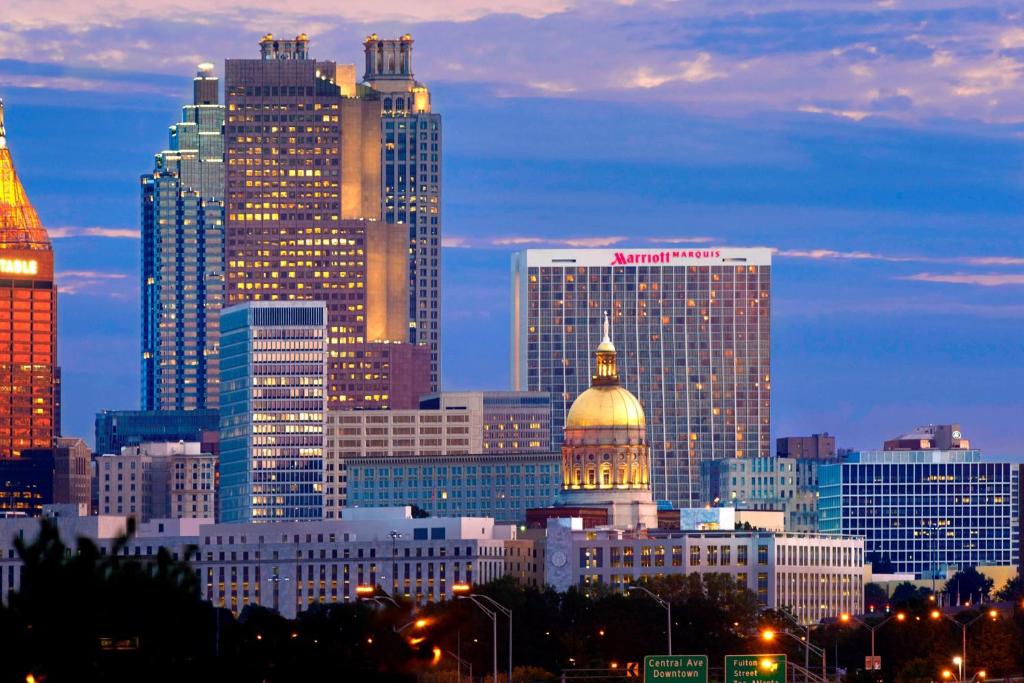
Become an SALC 2025 Partner
BECOME A SPONSOR OR EXHIBITORPartner Opportunities are Now Open
Want to reach over 900 lighting professionals?
Engage with industries leading Outdoor Lighting professionals at this years Street and Area Lighting Conference with one of our tailored packages.
Choose from all encompassing packages that include an exhibit booth, online and in-person branding, exhibit table & marketing suites opportunities.
IES Sustaining Members benefit from a substantial discount on the sponsorship & exhibit packages!
Partner opportunities are now available for the Conference together with various networking events.
Click the image to view the full opportunities and contact us now through one of the button links to book.
Thank you to our 2024 SALC Sponsors & Exhibitors!
For information regarding the 2024 IES SALC please contact Tiffany – tiffany@hifigroup.com.
Lighting Leader Sponsors
Performance Sponsors
Contributing Sponsors
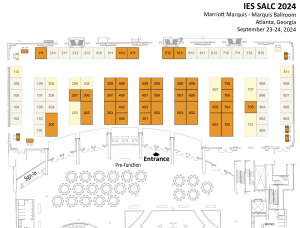
Future Street & Area Lighting Conference Dates
2025
21 – 24 September, 2025
Hilton New Orleans Riverside, New Orleans, LA
Cancellation Policy
Registrants who cancel their registration for any reason (including the denial of a travel visa due to delays or other issues) will receive a refund according to the following schedule
- Registration canceled more than 30 days before the event will be refunded.
- Registrations canceled less than 30 days but more than ten days before the event will be refunded 75% of the registration fee.
- Registration canceled less than ten days before the event will not be eligible for a refund.
- No refunds are granted for “no-shows.”
- Transfers and substitutions of registration are not allowed.
Processing of Refunds
- Refunds of registrations paid by credit card will be made by refunding to that credit card. Refunds of registrations paid by check will be made by check to the person or organization that issued the cheque.
- All refunds should be requested in writing by completing the Refund Request form and emailed to oloukina@ies.org (over-the-phone cancellations will NOT be accepted).
- ALL cancellations and refunds processed will incur a $99 cancellation/processing fee












